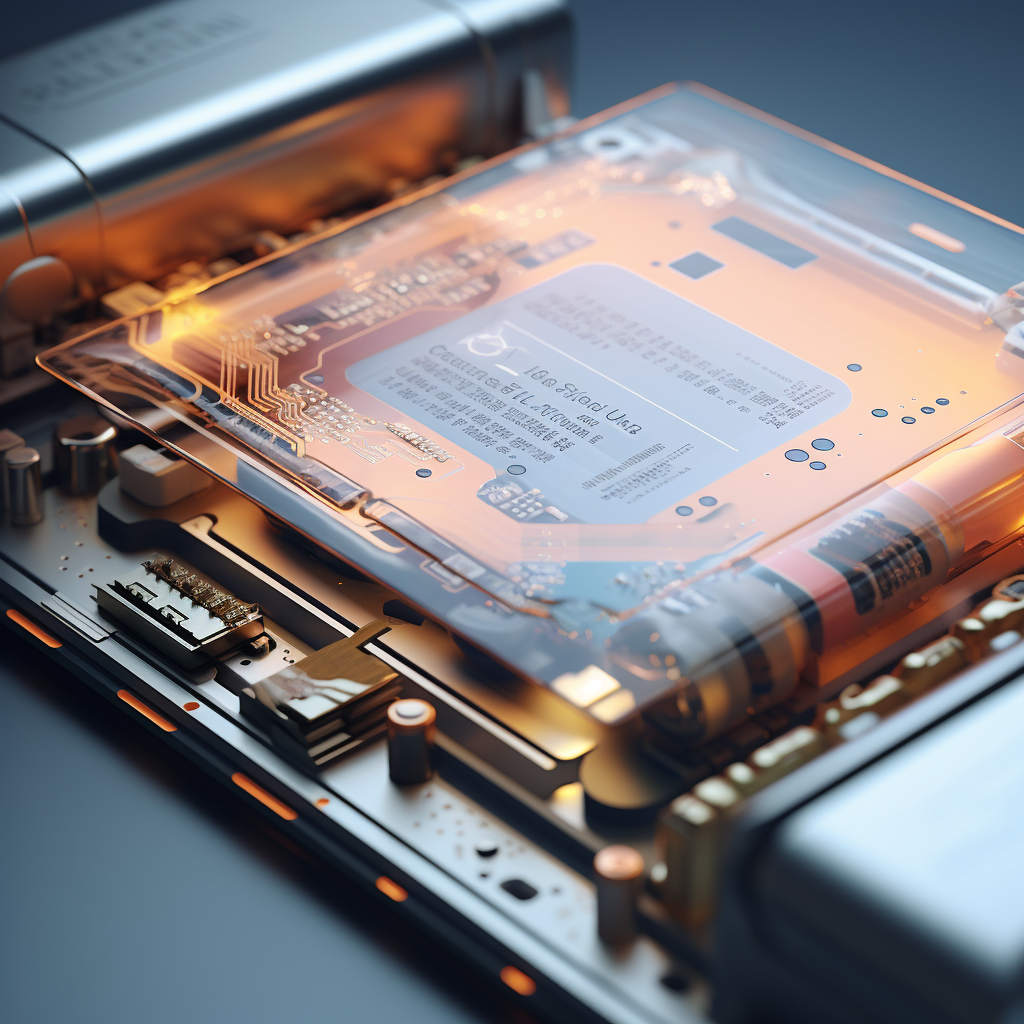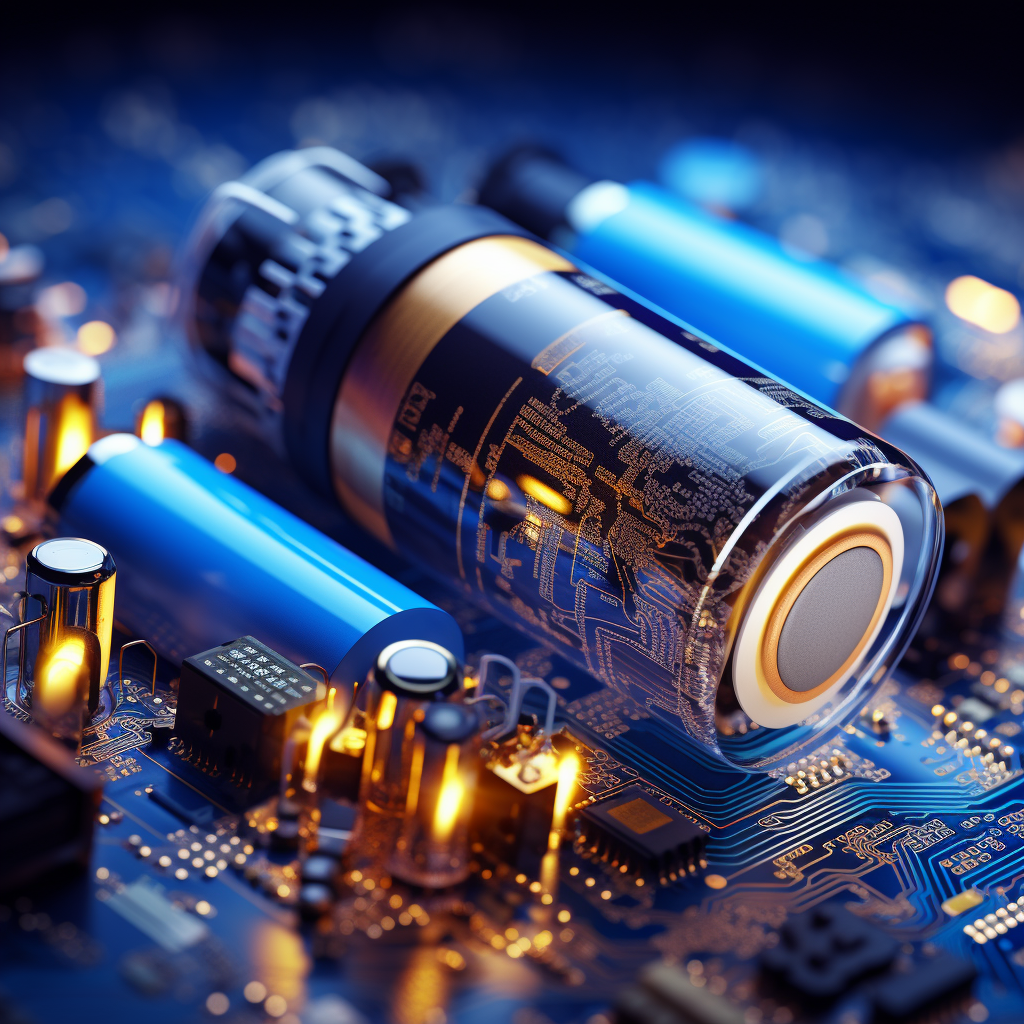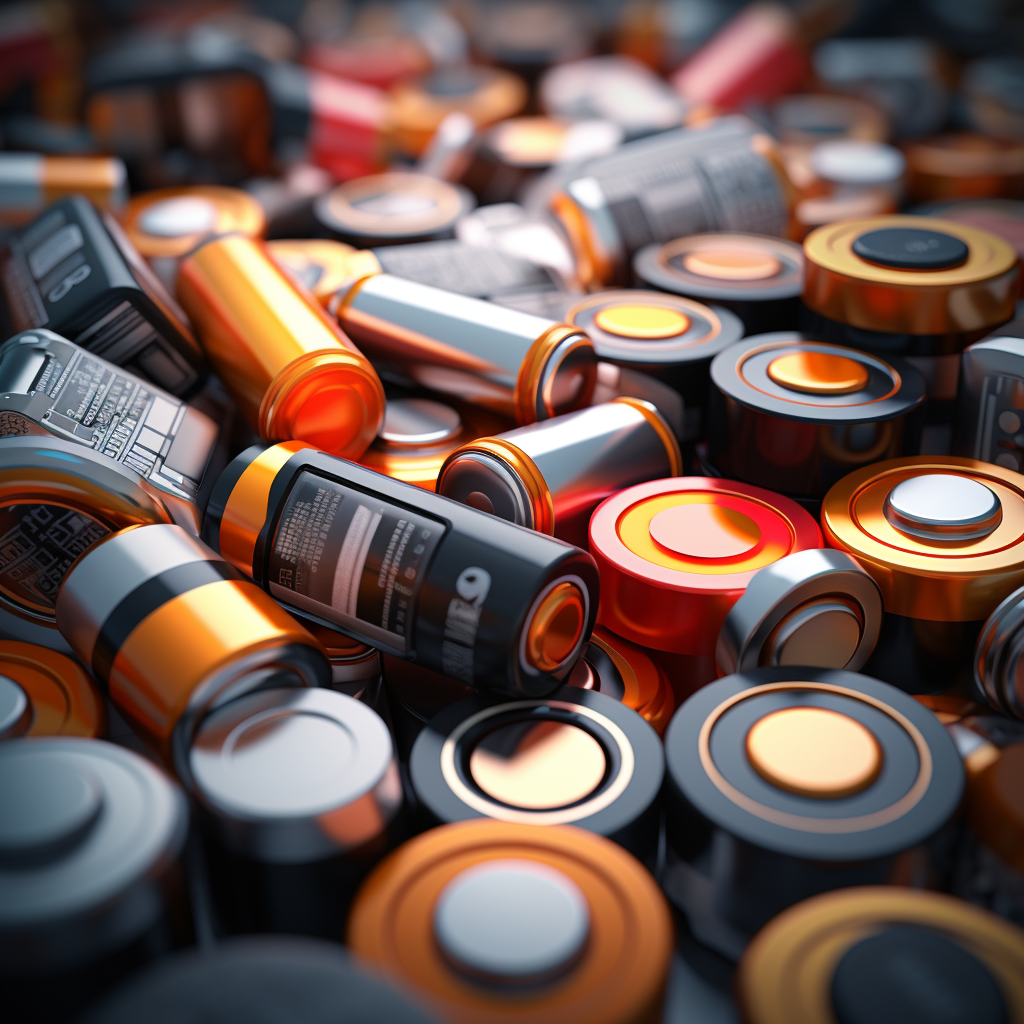Contents
- 1 The Basics of Lithium-ion Batteries
- 2 Lithium-Cobalt-Oxide (LiCoO2) Chemistry
- 3 Lithium-Manganese-Oxide (LiMn2O4) Chemistry
- 4 Lithium-Iron-Phosphate (LiFePO4) Chemistry
- 5 Lithium-Nickel-Manganese-Cobalt-Oxide (LiNiMnCoO2 or NMC) Chemistry
- 6 The Critical Role of Energy Density in Lithium-Ion Batteries
- 7 Conclusion and Future Prospects
The dawn of the 21st century has witnessed a monumental shift in energy consumption patterns. With a global push toward sustainability, the adoption of electric vehicles (EVs) and renewable energy systems has soared. Central to these technologies is the lithium-ion battery. But not all lithium-ion batteries are created equal; their performance, safety, and cost-effectiveness are dictated largely by their internal chemistry.
In 1991, Sony and Asahi Kasei introduced the first commercial lithium-ion battery, revolutionizing the portable electronics industry. Since then, various chemistries have been developed to optimize the batteries for different applications. This article aims to delve deep into the intricate world of lithium-ion battery chemistries. We will explore their distinct characteristics, evaluate their pros and cons, and look into the future developments in this rapidly evolving field.
Each chemistry has its unique advantages and drawbacks—some offer high energy density but come with safety concerns, while others are robust but less powerful. Understanding these chemistries can help consumers make informed decisions and can aid in the development of more efficient, safer, and cost-effective energy storage systems.
If you are intrigued by the complexity and potential of lithium-ion batteries, then this comprehensive guide is for you. Whether you’re an aspiring engineer, a green tech enthusiast, or someone who wants to understand the technology powering your electric car or smartphone, this article will serve as your go-to resource.
The Basics of Lithium-ion Batteries
Before diving into the specific chemistries, it’s crucial to understand the basics of how lithium-ion batteries work. At their core, these batteries consist of three main components: a positive electrode (cathode), a negative electrode (anode), and an electrolyte.
How Lithium-ion Batteries Work
The essential operation of a lithium-ion battery involves the movement of lithium ions from the anode to the cathode during discharge, and back during charging. This ion movement happens through the electrolyte, which serves as the medium for ion transport.
Components and Their Roles
- Cathode: Typically made of lithium metal oxide, this is where lithium ions move during discharge.
- Anode: Generally constructed from carbon, such as graphite, it hosts lithium ions during the charge cycle.
- Electrolyte: Usually a lithium salt dissolved in an organic solvent, it facilitates the movement of ions between the cathode and anode.
Voltage and Capacity
The voltage and capacity of a battery are dictated by the materials used in the cathode and anode. The difference in the electrochemical potential between the cathode and anode gives rise to the cell voltage, while the amount of lithium ions that can be stored determines the capacity, typically measured in ampere-hours (Ah).

C-Rate and Energy Density
Two other essential metrics are the C-rate, which refers to the speed at which a battery can be charged or discharged, and the energy density, a measure of how much energy a battery can store for a given volume or weight.
By tweaking the materials and design, manufacturers aim for a desirable balance of voltage, capacity, C-rate, and energy density suited for specific applications.
Common Applications
Due to their high energy density and rechargeable nature, lithium-ion batteries have found applications across various sectors:
- Consumer Electronics: Smartphones, laptops, and other portable devices.
- Electric Vehicles: Cars, bikes, and public transport systems.
- Industrial Uses: Backup power for data centers, grid storage, and more.
- Medical Equipment: Portable medical devices like defibrillators and respirators.
Understanding these basics is key to appreciating the differences and advantages offered by various lithium-ion battery chemistries, which we’ll delve into in the coming chapters.
Lithium-Cobalt-Oxide (LiCoO2) Chemistry
A Brief History
Lithium-cobalt-oxide (LiCoO2) is one of the earliest and most commonly used lithium-ion battery chemistries. Pioneered by John Goodenough in 1980, it gained commercial success in the early ’90s when Sony incorporated it into consumer electronics.
Characteristics and Advantages
- High Energy Density: One of the standout features of LiCoO2 batteries is their high energy density, making them ideal for applications where size and weight are crucial, such as smartphones and laptops.
- Low Self-Discharge: These batteries have a lower self-discharge rate compared to other chemistries, thereby retaining their charge for longer periods when not in use.
- Versatility: Due to its compact form factor and significant energy storage, LiCoO2 batteries find applications in a variety of consumer electronics.
Limitations and Safety Concerns
- Thermal Instability: LiCoO2 batteries can be prone to thermal runaway, a dangerous condition where internal battery temperatures can rise rapidly, leading to a fire or explosion.
- Shorter Cycle Life: The high energy density comes at the cost of a relatively shorter cycle life, which means these batteries tend to degrade faster over time.
- Cost: Cobalt is an expensive material and is often sourced from regions with ethical concerns related to mining practices.
Common Applications
Despite the limitations, LiCoO2 remains popular in consumer electronics like smartphones, laptops, and cameras due to its high energy density. However, its use in electric vehicles is limited due to safety concerns.
Lithium-Manganese-Oxide (LiMn2O4) Chemistry
Introduction and History
Developed as an alternative to the Lithium-Cobalt-Oxide (LiCoO2) chemistry, Lithium-Manganese-Oxide (LiMn2O4 or LMO) batteries were introduced in the late ’90s. Their primary selling point has been their improved safety profile and lower cost.
Characteristics and Advantages
- Enhanced Safety: LMO batteries are more thermally stable than their LiCoO2 counterparts, which reduces the risk of thermal runaway and makes them safer for use in high-power applications.
- Lower Cost: Manganese is cheaper and more abundant than cobalt, making LMO batteries a more cost-effective option.
- High Discharge Rates: These batteries can support high discharge rates, making them suitable for applications that require rapid power delivery.
Limitations and Concerns
- Lower Energy Density: LMO batteries have a lower energy density compared to LiCoO2 batteries, which could be a drawback in applications where size and weight are critical.
- Capacity Fade: One notable limitation of LMO batteries is their tendency to experience capacity fade over extended periods, especially when exposed to high temperatures.
Common Applications
LMO batteries are often used in power tools, electric bikes, and some electric vehicles. They can also be found in hybrid configurations, mixed with other chemistries like LiCoO2 or LiNiMnCoO2 (NMC), to optimize performance characteristics.
Summary
Lithium-Manganese-Oxide batteries offer a safer and more cost-effective alternative to LiCoO2 batteries, but they do so at the expense of lower energy density and long-term stability. Their usage is most common in sectors requiring high power output and improved safety profiles, such as power tools and specific types of electric vehicles.
As we can see, each lithium-ion battery chemistry brings its unique set of advantages and limitations to the table. Understanding these intricacies can greatly inform your decisions, whether you’re a consumer or a developer in the energy storage sector.
Lithium-Iron-Phosphate (LiFePO4) Chemistry
Introduction and Origin
The Lithium-Iron-Phosphate (LiFePO4 or LFP) chemistry has gained significant attention due to its unique set of characteristics that make it distinctly different from other lithium-ion variants. This chemistry was patented by the University of Texas in 1996 and commercialized shortly thereafter.
Characteristics and Advantages
- Exceptional Safety: One of the biggest advantages of LFP batteries is their thermal and chemical stability, making them one of the safest lithium-ion chemistries available.
- Long Cycle Life: LFP batteries typically have a longer lifespan compared to LiCoO2 and LMO chemistries, making them ideal for applications requiring long-term reliability.
- Low Cost: The use of iron and phosphate—materials that are abundant and cheap—results in a lower overall production cost.
- Eco-friendly: Given that they don’t use cobalt, which has ethical and environmental mining concerns, LFP batteries are considered more eco-friendly.
Limitations and Concerns
- Lower Energy Density: LFP batteries have lower energy density compared to other chemistries, which can be a limiting factor for applications where space and weight are important.
- Lower Discharge Voltage: These batteries typically operate at a lower average voltage, which may not be suitable for all applications.
Common Applications
Due to their long cycle life and safety features, LFP batteries are commonly used in solar power storage, electric vehicles, and industrial applications. Their use in consumer electronics is limited due to their lower energy density.

Lithium-Nickel-Manganese-Cobalt-Oxide (LiNiMnCoO2 or NMC) Chemistry
Introduction and Development
Lithium-Nickel-Manganese-Cobalt-Oxide, commonly known as NMC, is a newer chemistry that aims to combine the best of the various lithium-ion types. Developed in the 2000s, NMC batteries have rapidly gained acceptance in both consumer electronics and larger-scale applications like electric vehicles.
Characteristics and Advantages
- Balanced Performance: NMC batteries offer a good balance of energy density, safety, and lifespan, making them versatile across various applications.
- Higher Energy Density: When compared to LMO and LFP, NMC batteries provide higher energy density, allowing for longer ranges in electric vehicles and longer-lasting power in portable devices.
- Cost-Effectiveness: The use of manganese reduces the amount of expensive cobalt required, making these batteries more cost-effective.
Limitations and Concerns
- Safety: While safer than LiCoO2 batteries, NMC batteries still present a higher risk of thermal runaway compared to LFP batteries.
- Complex Manufacturing: The blended nature of the cathode materials makes the manufacturing process more complex, which can impact the cost and quality control.
Common Applications
Given their balanced profile, NMC batteries are commonly used in electric vehicles, portable electronics, and power tools. Tesla’s Powerwall, for example, utilizes NMC batteries for residential energy storage.
The Critical Role of Energy Density in Lithium-Ion Batteries
Introduction
Energy density is a pivotal factor that shapes the usability and application range of lithium-ion batteries. It is the measure of how much energy a battery can store for a given volume or weight. In this chapter, we delve into why energy density is so critical and how it varies among different lithium-ion chemistries.
Importance of Energy Density
- Portability: Higher energy density allows for smaller and lighter batteries, which is crucial for mobile devices and electric vehicles.
- Range: In the context of electric vehicles, a higher energy density directly translates to a longer driving range on a single charge, addressing the prevalent “range anxiety.”
- Performance: Devices with higher energy density batteries can run more power-intensive applications for extended periods.
Energy Density Across Chemistries
- LiCoO2: Known for its high energy density, ideal for smartphones and laptops.
- LMO: Trades off some energy density for safety and lower costs, often used in power tools.
- LFP: Lower energy density but excels in safety and cycle life, ideal for stationary energy storage systems.
- NMC: A balanced chemistry that offers relatively high energy density along with safety features, widely used in electric vehicles.
Factors Affecting Energy Density
- Material Science: The choice of materials for the anode, cathode, and electrolyte directly influences energy density.
- Battery Design: Engineering the thickness of the electrodes, the amount of electrolyte, and the overall architecture can impact energy density.
- Temperature: Battery performance and, consequently, energy density can be affected by environmental temperatures.
The Future of Energy Density
Advancements in material science, like silicon anodes or solid-state electrolytes, promise to substantially boost the energy density of lithium-ion batteries in the coming years. These innovations have the potential to revolutionize sectors like electric aviation, where high energy density is crucial.
Conclusion and Future Prospects
The Balancing Act
Choosing the right lithium-ion battery chemistry involves a complex set of trade-offs. From energy density and safety to cost and environmental impact, each chemistry comes with its unique advantages and limitations. As we’ve seen, there’s no one-size-fits-all answer; the “best” chemistry is highly dependent on the specific requirements of the application in question.
The Importance of Continued Research
Ongoing research in battery technologies is essential for overcoming existing limitations. Innovations in material science, battery design, and manufacturing processes hold the promise of batteries that are not only safer and more energy-dense but also more environmentally friendly and cost-effective.
Upcoming Technologies
- Solid-State Batteries: These promise higher energy densities and better safety but are still in the developmental stage.
- Silicon Anodes: Silicon promises to substantially increase the energy density of batteries, although challenges like swelling and rapid degradation remain.
- Sustainability: Research into recycling methods and alternative materials aims to make batteries more sustainable in the long term.
The Road Ahead
As our reliance on batteries continues to grow, understanding the nuances of different lithium-ion chemistries becomes increasingly important. Whether you’re a consumer looking to buy an electric vehicle or a policymaker concerned with energy storage solutions, this knowledge is key to making informed decisions.
Summary
The landscape of lithium-ion batteries is as diverse as it is dynamic. The continual push for higher energy densities, better safety profiles, and lower costs keeps this field in a state of rapid evolution. As technologies mature and new ones emerge, our understanding of what makes a “good” battery will continue to evolve, offering promising avenues for a future where energy storage is efficient, safe, and sustainable.
Thank you for joining me on this in-depth exploration of lithium-ion battery chemistries. The journey through each type’s history, advantages, limitations, and applications hopefully provides you with a comprehensive understanding of this critical technology in our modern world.


